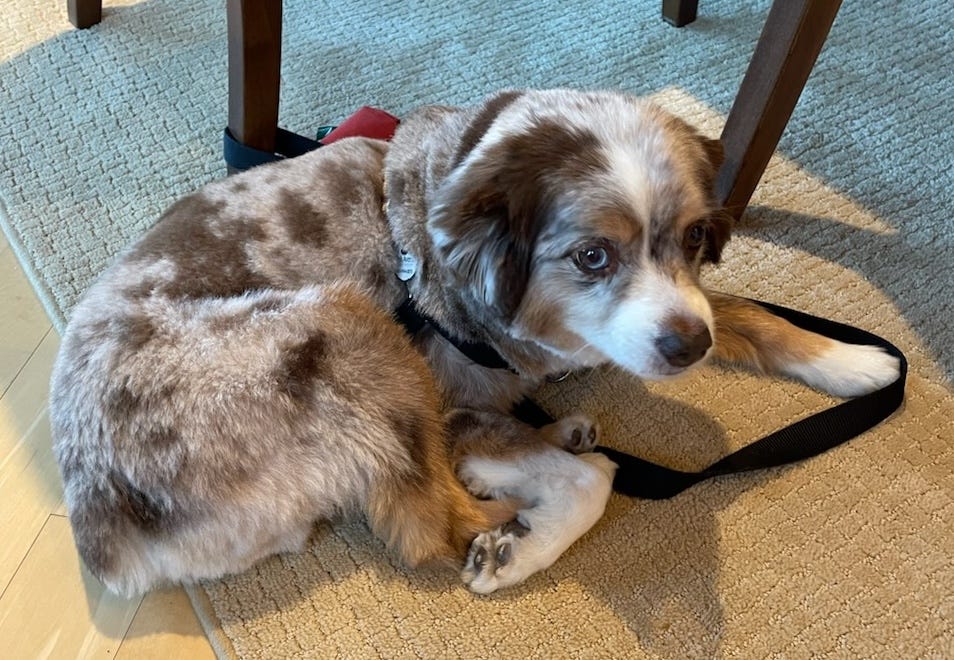The Subtle Art of Embracing Change
Discover how stepping out of your comfort zone can transform your career and life - just like a caterpillar becoming a butterfly
I’ve been thinking about change a lot lately. It could be the shift into summer or wrapping up the first half of 2024 and wondering where did June go?!? A quote from a prior newsletter continues to repeat in my head — “the only constant is change”.
It could be all of the talk about the changes AI is going to bring to everything we do. Yes, I live in Silicon Valley. Yes, it’s a bubble. I still feel / believe what happens in Silicon Valley is a valuable lens into a slice of the future. Growing up here has given me a level of adaptability, because - queue the chorus… “the only constant is change”.
When I see new tech, I try it on for size. Those that fit or evolve my style, I keep. Those that don’t, I move on from to make (mental) room for other things. Does this make my viewpoint a bit warped or wasteful? Yes, trying new software or organizational techniques takes time and effort, yet I prioritize learning as I prefer to be a bit ahead than to be caught in a game of constant catch up. Why? Because I appreciate… “the only constant is change”.
For example, throughout my career, I’ve introduced new trends and technologies to others. Sometimes resulting in appreciation and adoption. Other times ending up in variations of “you have got to be kidding”. Monster wasn’t moving fast enough to explore social, mobile and evolving consumer digital behavior, so I left to do emerging media at Razorfish. Ironically, at Razorfish, when Twitter was launched at SXSW in 2007, people thought my fascination with the service was just weird… until they began to realize it wasn’t because… “the only constant is change”.
Even today when I speak of adaptive leadership techniques and the importance of soft skills for personal, team, and organizational success - aka putting people first - eye rolls happen. To move quickly, some counter, you must have single threaded leadership and top down directives. You can abide by those models and still practice emotional intelligence, promote collaboration over competition, and create an environment which considers both mental wellness and psychological safety. All you need to do is step outside your comfort zone, just a bit. Only 15%. That’s all the “Touchy Feely” business school course urges students to push themselves. Why, to get comfortable being uncomfortable, because… “the only constant is change”.
By moving beyond your comfort zone into the growth zone, you'll be able to do just that: grow. You'll find yourself becoming more productive, achieving more, and reaching the goals you set for yourself — if you're willing to put in the work. (link)
Could that be the sticking point, “put(ting) in the work”? It’s much easier to complain than to take action and create change. I’d like to challenge people to follow Kenneth Berger’s recommendation and try out the "dream behind the complaint" technique. It encourages you to turn your complaints into dreams, pushing you to think bigger and step outside your comfort zone for personal and professional growth. Image what you could do if instead of complaining you took action? What could the future hold?
Try this technique out the next time something irks you. You too can change, if you are willing to put in the effort. Which reminds me of a comment from one of my Product Sense posts,
“I never thought about product sense in this way before. It's all about blending experiences, empathy, and problem-solving. It's a continuous journey that keeps evolving.”
+1 to the comment. Why? Sing it with me, because… “the only constant is change”.
Adaptability stands as life's most powerful trait
Readers will know that I have a Peloton. During a recent class, Matt Wilpers said he was increasing his accountability this summer by taking part in a few local races. He wasn’t doing so to compete. Instead his goal was to continue to improve himself. To get better, to continue to evolve and change.
From Charles Darwin we learn..
“It is not the most intellectual of the species that survives; it is not the strongest that survives; but the species that survives is the one that is best able to adapt and adjust to the changing environment in which it finds itself.” (link)
Does the quote mean if you find yourself in an environment where the whisper network rules the day that you too must talk behind people’s backs? That isn’t my view. Instead, I recommend evaluating the situation and identifying small but impactful changes - let’s be touchy feely and say 15%. For example, the Glue Club had an excellent post on how to approach project ownership. Instead of embracing acronyms common in the tech world - RACI, DACI, RAPID - the Lambda School adopted a model from Trader Joe’s which calls for a Captain.
The Captain (always promoted from within—a Mate who has exemplified unwavering integrity and commitment) is the leader of the store. With the assistance of a team of Mates, the Captain directs the strategy and develops the Crew. They do it all from the floor of the store (there are no back offices). (link)
Notice the Captain does not work alone (“with the assistance of a team of Mates”). Nor does the Captain ignore their team (“develops the Crew”). And, does so without whispers (“there are no back offices”). I’m not saying every Trader Joe’s is perfect. Instead what Lambda School did is learn, identify a structure that could be improved, and made a slight change. They adapted. And, you can too. It just takes a small step outside your comfort zone to introduce positive change.
Molting through change - Humans do it too
Animals molt as part of their natural growth and adaptation process. Humans do something similar. For example, we shed old traits or behaviors as we gain more experience. We also change our presence to see if a person or situation will pass. Not a fan of speaking in public? It’s likely you have tried to make yourself really small once or twice to be passed over when a presenter was sought.
The same thing happens in coaching. Individuals will reach a plateau where they must discard and shed off (aka molt) prior beliefs or approaches to move on and reach the next stage. Then a new set of questions and experiences arise. Caterpillars molt as they grow and develop into butterflies. They go through several stages, shedding their skin multiple times before finally transforming into a chrysalis, from which they emerge as butterflies. So, do humans.
What happens if you like the stage you’re at and don’t want to molt? Where you’re at is comfortable. You’ve got a solid set of strengths and you’re playing into them. Essentially you’re stuck at the chrysalis stage. Never speaking up is cozy. Yet you only reduce your nerves by molting and breaking free of your fears. As Ultraspeaking shares, it is through action that you build evidence that you can succeed. To truly progress, we must change.
Just as day turns to night, strengths can turn into weaknesses as well. Let’s say you have gotten over your anxiety of speaking and now raise your hand or speak out all the time. We’ve all worked with such folks. And, it’s likely they’ve gotten on all our collective nerves too. Strengths can become weaknesses when they are overused, misused, or used in the wrong situations. Too much change can be just as detrimental as no change at all, which is another vote for experimenting through small, incremental steps and finding that uncomfortably comfortable sweet spot.
How do you know when your porridge is just right? A friend shared a story with me. A young relative was raising butterflies. They saw a caterpillar (aka pupa) pushing the edges of its chrysalis, trying to break free. To “help”, the child broke open the chrysalis. As the new butterfly emerged, it fell to the ground. As it didn’t have the full time to strengthen its wings by breaking out of its chrysalis, it was too weak to fly. Keep this point in mind when you’re helping a colleague, team member or coaching client. The struggle to change is part of the process and worth the effort. A dash of feedback and coaching will set them on the right path.
I’d love to say Lancaster changed and didn’t try to bite my parents during a recent visit. Unfortunately no such luck. His protective strength definitely veered into the weakness zone.








